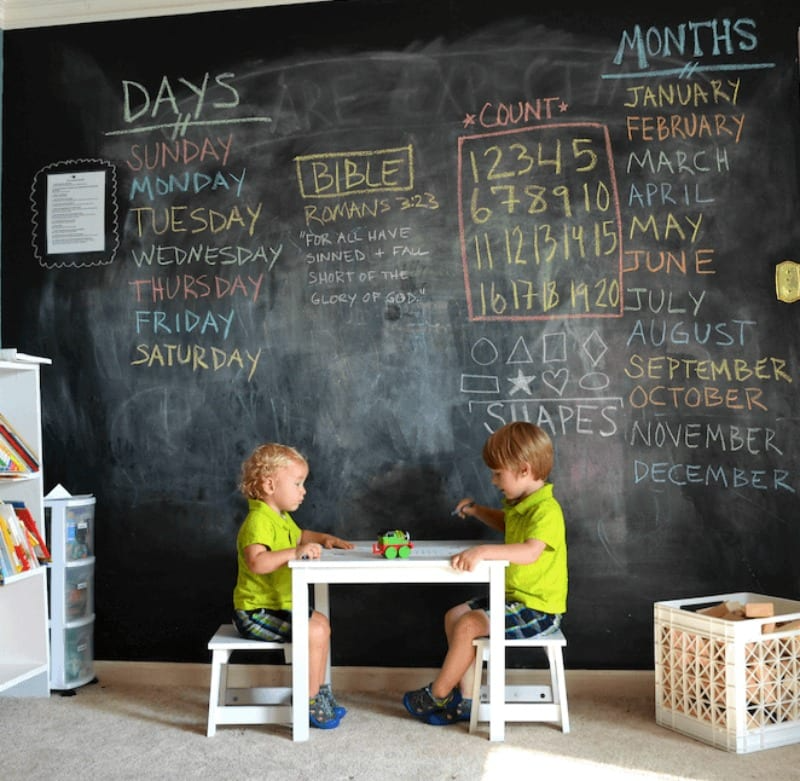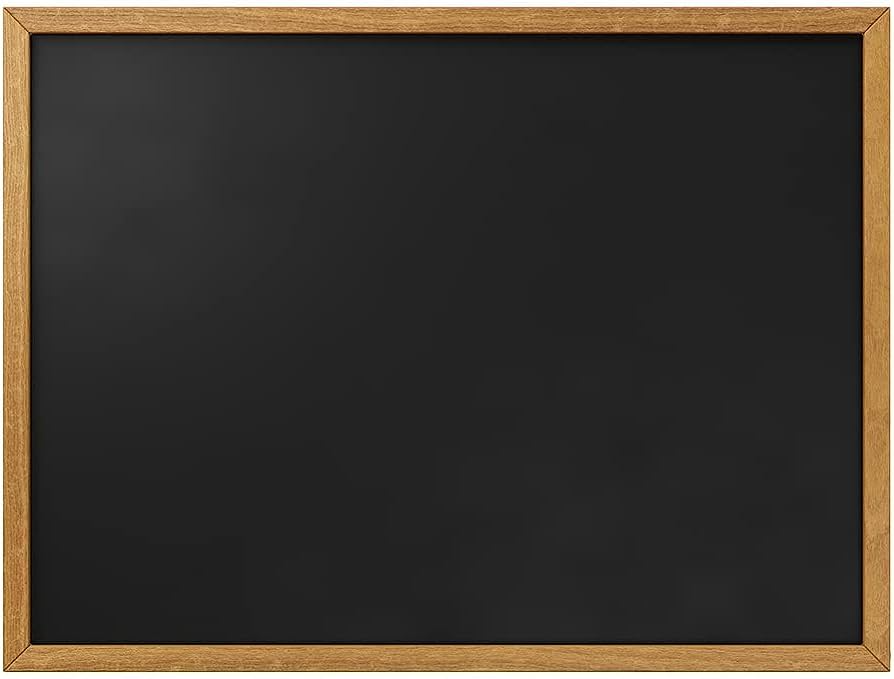Introduction
The humble chalkboard has been a mainstay in classrooms, cafes, and homes for decades. Despite the advent of digital technology, these black or green boards, combined with simple pieces of chalk, continue to captivate and inspire. Their versatility, ease of use, and nostalgic charm make them indispensable tools for teaching, creativity, and communication. This article explores the fascinating world of chalkboards, delving into their history, key features, benefits, maintenance, and diverse uses. We will also look at new innovations and future trends in the realm of chalkboards.

A Brief History of Chalkboards
From Slate to Blackboard
The history of chalkboards dates back to the early 19th century. Before chalkboards, teachers used small, hand-held slates to instruct students. These slates were cumbersome and limited in scope. The invention of the wall-mounted chalkboard revolutionized education, allowing teachers to convey information to entire classrooms at once. The first large chalkboards were made of slate, a durable and readily available material. Over time, these slates evolved into the modern blackboards we know today.
The Rise of the Green Board
In the mid-20th century, green chalkboards began to replace the traditional black versions. The change was driven by practical considerations. Green boards reflected less light, reducing glare and making it easier on the eyes. This innovation was quickly embraced in schools and universities, becoming the new standard for decades. Despite the growing popularity of whiteboards and digital screens, green chalkboards remain a common sight in educational settings.
Key Features of Chalkboards
Writing Surface
The writing surface is the most critical feature of a chalkboard. Traditional chalkboards are made from slate, which provides a smooth and durable surface for writing. Modern chalkboards use materials like porcelain enamel, which offers similar benefits but with enhanced durability and ease of maintenance. The surface texture of a chalkboard allows chalk to adhere well, creating clear and legible markings. The ability to write and erase effortlessly makes chalkboards ideal for dynamic and interactive use.
Size and Shape
Chalkboards come in various sizes and shapes to suit different needs and spaces. From small, portable chalkboards for personal use to large, wall-mounted boards for classrooms and lecture halls, there is a chalkboard for every application. Custom-shaped chalkboards, such as circles, ovals, and decorative frames, add a touch of creativity and uniqueness. The versatility in size and shape ensures that chalkboards can fit seamlessly into any environment.
Color Options
While black and green are the most common colors for chalkboards, modern options include a wide range of hues. Colored chalkboards add a vibrant and playful element to spaces like homes, cafes, and creative studios. White chalkboards, also known as chalkboard paint, allow users to transform any surface into a writable area. The variety of colors and finishes available ensures that users can choose a chalkboard that complements their aesthetic and functional needs.
Frame and Mounting Options
The frame and mounting options of a chalkboard contribute to its functionality and appearance. Chalkboards can be framed with materials like wood, metal, or plastic, adding durability and style. Mounting options include wall-mounted, stand-alone, and portable designs. Wall-mounted chalkboards are ideal for classrooms and offices, providing a permanent writing surface. Stand-alone and portable chalkboards offer flexibility and ease of movement, making them suitable for events, homes, and outdoor use.
Benefits of Using Chalkboards
Eco-Friendly and Cost-Effective
Chalkboards are an eco-friendly and cost-effective alternative to paper and digital screens. Unlike paper, which generates waste, chalkboards can be reused indefinitely. The only consumables are chalk and erasers, which are inexpensive and long-lasting. Chalkboards also consume no electricity, reducing energy usage and environmental impact. The durability and reusability of chalkboards make them a sustainable and economical choice for long-term use.
Interactivity and Engagement
Chalkboards encourage interactivity and engagement, making them valuable tools for learning and communication. In classrooms, teachers use chalkboards to illustrate concepts, solve problems, and facilitate discussions. The tactile nature of writing on a chalkboard enhances memory retention and comprehension. In businesses and creative spaces, chalkboards serve as collaborative platforms for brainstorming, planning, and visual communication. The dynamic and hands-on nature of chalkboards fosters active participation and creativity.
Aesthetic Appeal
Chalkboards add a touch of nostalgia and charm to any space. Their classic appearance evokes a sense of tradition and simplicity, creating a warm and welcoming atmosphere. In cafes and restaurants, chalkboards are often used to display menus and specials, adding a rustic and artisanal feel. In homes and creative studios, chalkboards serve as decorative elements, showcasing art, messages, and organization. The timeless and versatile design of chalkboards enhances the aesthetic appeal of any environment.
Maintenance and Care for Chalkboards
Cleaning and Erasing
Proper cleaning and erasing are essential to maintain the functionality and appearance of a chalkboard. Use a high-quality chalkboard eraser to remove chalk markings regularly. For a deeper clean, wipe the board with a damp cloth or sponge, then dry it with a soft cloth. Avoid using harsh chemicals or abrasive materials, as they can damage the surface. Periodic cleaning with a chalkboard cleaner or a mixture of water and vinegar helps prevent ghosting and ensures a smooth writing surface.
Seasoning a New Chalkboard
Seasoning a new chalkboard is a crucial step to prevent ghosting and improve the quality of chalk markings. To season a chalkboard, cover the entire surface with a layer of chalk, then wipe it off with a soft cloth or eraser. Repeat the process several times to fill the porous surface with chalk dust, which creates a more even and writable surface. Seasoning ensures that the chalkboard allows for clear and legible writing and easy erasing.
Storing Chalk and Erasers
Proper storage of chalk and erasers helps keep them in good condition and ready for use. Store chalk in a dry and cool place to prevent it from becoming brittle or dusty. Use a chalk holder or container to keep pieces organized and protected. For erasers, clean them regularly by tapping them to remove excess chalk dust. Replace worn-out erasers to ensure effective cleaning and erasing. Proper storage and maintenance of chalk and erasers contribute to a smooth and enjoyable chalkboard experience.
Repairing and Reconditioning
Over time, chalkboards may develop scratches, stains, or wear that affect their usability. For minor scratches, buff the surface with a soft cloth or sponge to reduce their appearance. For more significant damage, consider resurfacing the chalkboard with a chalkboard paint or a specialized chalkboard repair kit. Reconditioning the surface helps restore its functionality and extends the life of the chalkboard. Regular maintenance and timely repairs ensure that your chalkboard remains a reliable and durable tool.
Diverse Uses of Chalkboards
Educational Settings
Chalkboards have long been a staple in educational settings. They serve as primary tools for teaching and learning, providing a platform for illustrating concepts, working through problems, and engaging students. Chalkboards facilitate interactive and dynamic lessons, encouraging student participation and collaboration. The ability to write and erase quickly allows teachers to adapt their instruction and respond to student needs. In classrooms, lecture halls, and tutoring centers, chalkboards continue to play a vital role in education.
Business and Office Use
In businesses and offices, chalkboards are valuable tools for communication and collaboration. They are used in meeting rooms to brainstorm ideas, plan projects, and track progress. Chalkboards provide a visual platform for presentations, data visualization, and strategic planning. In retail and hospitality settings, chalkboards are commonly used for signage, menus, and promotional displays. The ability to update information quickly and creatively makes chalkboards an effective medium for business communication.
Home Organization and Decoration
Chalkboards are popular in homes for organization and decoration. They can be used to create family message boards, grocery lists, and weekly planners. In kitchens, chalkboards serve as menu boards, recipe holders, and chore charts. In children’s rooms, they provide a space for drawing, practicing writing, and educational activities. Chalkboards also add a decorative touch to living spaces, showcasing quotes, artwork, and seasonal decorations. Their versatility and aesthetic appeal make chalkboards a practical and stylish addition to any home.
Creative and Artistic Expression
Artists and crafters use chalkboards as a medium for creative expression. The smooth and erasable surface allows for experimentation with drawings, lettering, and designs. Chalkboards are used in art studios, galleries, and craft shows to display artwork and information. In event planning, chalkboards serve as decorative elements, signage, and photo backdrops. The ability to create and update designs easily makes chalkboards a favorite among creative professionals and hobbyists.
Innovations and Future Trends
Digital Chalkboards
As digital technology continues to evolve, digital chalkboards are emerging as a modern alternative to traditional boards. These interactive displays combine the tactile experience of writing with advanced digital capabilities. Digital chalkboards allow users to write, draw, and interact with content using a stylus or touch interface. They offer features like saving and sharing notes, multimedia integration, and collaborative tools. Digital chalkboards are gaining popularity in educational and business settings, offering a blend of classic and contemporary features.
Eco-Friendly Chalk Materials
Environmental sustainability is driving innovation in chalk materials. Manufacturers are developing eco-friendly chalk made from natural and biodegradable ingredients. These alternatives reduce the environmental impact of traditional chalk and provide a safer option for users. Eco-friendly chalk is non-toxic, dust-free, and available in a variety of vibrant colors. The shift towards sustainable materials aligns with the growing demand for environmentally conscious products.
Custom Chalkboard Designs
Customization is a growing trend in the world of chalkboards. Consumers are seeking personalized and unique chalkboards that reflect their style and preferences. Custom designs include unique shapes, colors, and frames tailored to specific needs and spaces. Businesses and individuals can order custom chalkboards for branding, décor, and special events. The ability to create tailor-made chalkboards enhances their appeal and functionality.
Integration with Smart Home Technology
The integration of chalkboards with smart home technology is an emerging trend. Smart chalkboards can connect to home automation systems, allowing users to control lighting, temperature, and other devices through written commands. These boards can sync with digital devices to display notifications, calendars, and reminders. The fusion of traditional and smart technology offers new possibilities for home organization and communication, making chalkboards a central element of the connected home.
Conclusion
Chalkboards remain a timeless and versatile tool, offering countless possibilities for teaching, creativity, and communication. Their durability, ease of use, and nostalgic charm make them a favorite in educational, professional, and personal settings. From classrooms and offices to homes and art studios, chalkboards provide a dynamic platform for writing, drawing, and interacting. Proper maintenance and care ensure that chalkboards remain functional and visually appealing. As innovations continue to emerge, chalkboards are adapting to modern needs and technologies, blending tradition with contemporary features. Whether you’re a teacher, business owner, artist, or homemaker, chalkboards offer a practical and engaging way to express ideas, organize information, and enhance spaces. The enduring appeal and versatility of chalkboards ensure that they will continue to inspire and captivate for generations to come.




